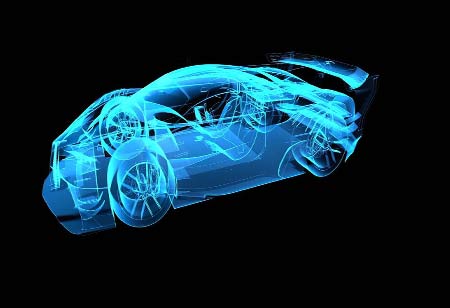THANK YOU FOR SUBSCRIBING
THANK YOU FOR SUBSCRIBING
Be first to read the latest tech news, Industry Leader's Insights, and CIO interviews of medium and large enterprises exclusively from Auto Tech Outlook

By
Auto Tech Outlook | Tuesday, October 03, 2023
Stay ahead of the industry with exclusive feature stories on the top companies, expert insights and the latest news delivered straight to your inbox. Subscribe today.
It is imperative to transition to electric vehicles (EVs) to reduce emissions contributing to climate change.
FREMONT, CA: Just a few years ago, even the most ardent proponents of personal mobility might not have imagined the extent to which the electrification of personal mobility would accelerate. Governments will likely impose mandates in many countries to accelerate change. BloombergNEF (BNEF) in London estimates that half of the world's passenger vehicles sold by 2035 will be electric, even without new policies or regulations.
Material scientists are tackling two significant challenges in anticipation of an electric vehicle-dominated world. The first is how to reduce the amount of rare, expensive, or problematic metals used in batteries because their mining harms the environment and the community.
Lithium future: Scientists have a first challenge: reducing the number of metals required to mine for EV batteries. The amount of lithium, nickel, manganese, and cobalt in a single-car lithium-ion battery pack can vary depending on the type and model of the vehicle. According to figures from Argonne National Laboratory, this battery pack contains about eight kilograms of lithium, 35 kilograms of nickel, 20 kilograms of manganese, and 14 kilograms of cobalt.
Environmental concerns accompany the increase in lithium mining: current extraction methods require large quantities of energy or water. Geothermal power is used to drive the process of extracting lithium from geothermal water, which is considered a more benign method. It is also essential to highlight that mining lithium will help displace destructive fossil-fuel extraction, despite this environmental cost.
Metal managing: Numerous laboratories are experimenting with cobalt-free or low-cobalt cathodes to address raw materials issues. Lithium ions can be removed from the cathode by more than half during charging, but cathode materials must be carefully designed to avoid crystallization. The energy density of a battery typically decreases when cobalt is eliminated.
Recycle better: Batteries made without cobalt will have unintended consequences for researchers. Due to the low cost of mining metal, especially lithium, recycling batteries is economically feasible.
In recycling plants, battery cells are typically shredded into powders and mixed with other materials. During hydrometallurgy, this mix is liquefied or dissolved in acid, resulting in its elemental breakdown. After precipitating metals are removed from the solution, they are precipitated again.
A wide range of crystal structures and compositions can be reprocessed using these techniques. Recycling centers receive waste streams containing different types of batteries, which means they will receive various cathode materials, which might complicate the separation of cathode-crystal kinds. ReCell can separate nickel, manganese, and cobalt from other types of cells, such as lithium iron phosphate. Still, they won't be able to separate two types of cells containing cobalt and nickel in different proportions.
Crank up the volume: A lead-acid battery that starts petrol-powered vehicles is considered an optimistic example by analysts. As lead is toxic, these batteries must be disposed of properly since they are hazardous waste. The lead industry has developed an efficient recycling system, although inexpensive.
 Copyright © 2025 AutoTech Outlook. All Rights Reserved | Privacy Policy | Subscribe | Sitemap | About us | Feedback Policy | Editorial Policy
Copyright © 2025 AutoTech Outlook. All Rights Reserved | Privacy Policy | Subscribe | Sitemap | About us | Feedback Policy | Editorial Policy 
However, if you would like to share the information in this article, you may use the link below:
https://www.autotechoutlookapac.com/news/all-about-electric-car-batteries-nwid-1240.html




